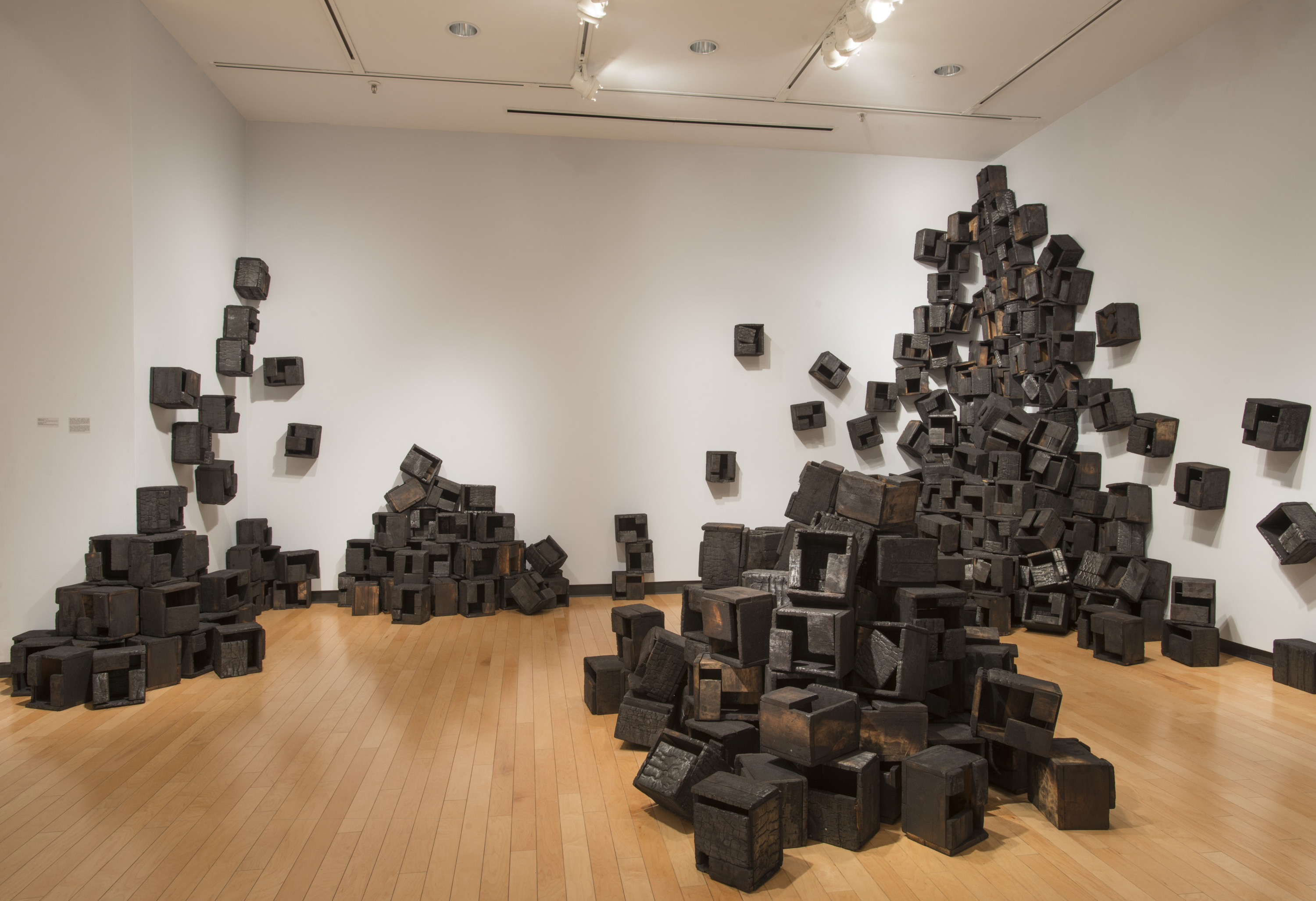


La historia recordada by Roberto Diago translates into English as “The Remembered History,” a title that purely encapsulates what the work is Diago’s work is about. Diago is an Afro-Cuban artist from Havana, Cuba, whose works present a personal uprising that ignite a conversation about the racial identity of Cuba. Diago largely works with found materials such as metals, oil drums, and wood because those materials resonate with the people of Cuba, as such objects are commonly seen in neighborhoods around Havana. Much of his work is abstracted to disguise its true content of his commentary of the racial oppression and divide in Cuba. With the inclusion of bilingual components in the exhibition, La historia recordada allows for a wider reach for those who don’t speak English; furthermore, individuals fluent in English and Spanish may have an enriched experience by comparing the translations and their connections to the work on view.
Experiencing any artistic work in its original form allows for the capture of its true essence. Translating texts, of any length, is a hard task to undergo because words cannot simply be traded out for their counterparts. In any translation, there are many vital aspects to consider, like syntax, flow, meaning, and construction. When providing a translation, in any capacity, it is important to stay as closely as the author intended it, but accounting for factors as seemingly simple as cultural dialects to the use of hyperboles and metaphors can make the process a difficult undertaking. As a Spanish heritage speaker, it has been an extremely rewarding experience to view this exhibition and be able to see it in its intended light. One of the aspects that I have enjoyed the most is comparing the translations from Spanish to English and vice versa. You notice slight differences in the translations, that at face value adequately spell out the intended meaning, but do not encapsulate the true essence of the original title or descriptions. When I look at the titles of Diago’s work, I notice a poetic aspect and marriage between the words and the actual work. A certain cadence rolls off of the tongue that directly merges the Diago’s intention of representing the strands of racial oppression in Cuba.

While most of the Diago’s works in La historia recordada are untitled, to me, it highlights importance of the translation of the works that are titled. Cuidad en Ascensio, is a conglomeration of small boxes scattered throughout the corner of the room. The boxes are mostly scorched but parts of the corners and sides show the light brown nature of the wood in its original state. These boxes are meant to remind the viewer of burned villages, homes that have been destroyed, and force us to think of ourselves living in such circumstances. The small-scale dimensions and the versatility of the arrangement of this piece give the viewer a feeling of being an outsider looking into the disparaging nature of which this work was inspired from. Cuidad en Ascensio is translated as “City Ascending”, but for me the article “en” is of great importance. It strengthens the fact that the city is in the process of ascending, which shows that while the suffering from the racial oppression and terror has not gone, there is an aspect of hope that this community is fighting for. The literal translation of the piece’s title has no technical errors and ultimately is precise, but there is a certain essence that is captured with looking at the work with all of its original components. To me, these titles seize the raw nature of what this Diago is striving to convey and show that the dialogue of racial oppression should not be looked as a thing of the past, but as an ever-present voice.
This exhibition brings forward the importance of providing art access to a wider range of audiences possible creating a bilingual approach. Noticing the wide range of visitor attendance highlights the importance to be an accessible outlet for all the members of the community. By creating bilingual signage and text panels among other materials the Halsey is on its way on breaking one of the most common barriers of accessing and interacting with art and ideas: the language barrier. Individuals who are able to access and experience the gallery’s content in both Spanish and English allow them to feel more comfortable and to feel valued by the host institution. This is a shift that I believe needs to be ever present in all of the future exhibitions displayed in the Halsey and in arts institutions from now on. Hopefully, we can reach a point where bilingualism becomes the norm and we can move into expanding the inclusivity of all people though multilingualism.
by María Carrillo-Marquina, Halsey Institute Intern